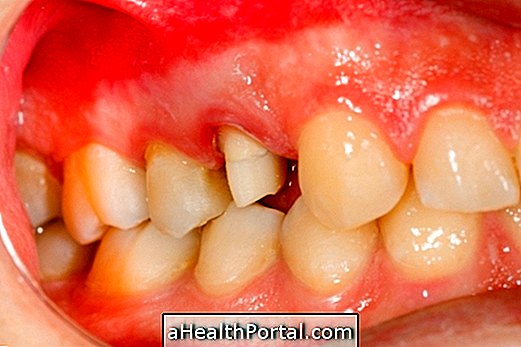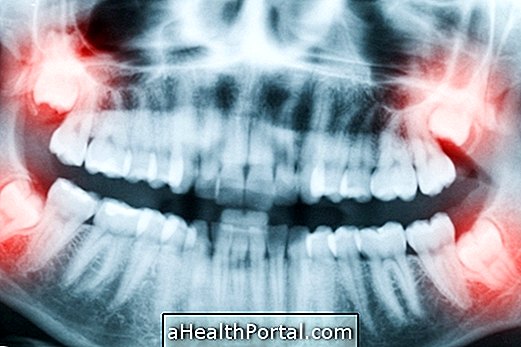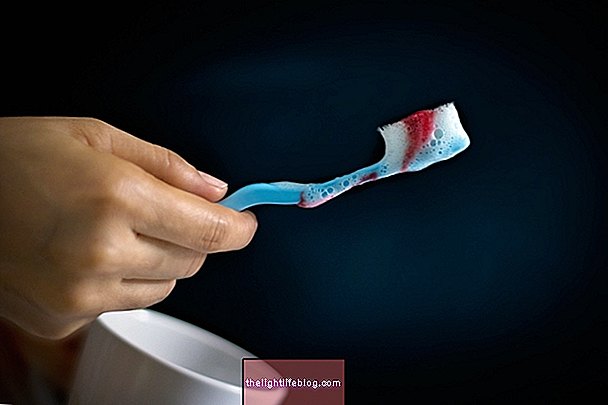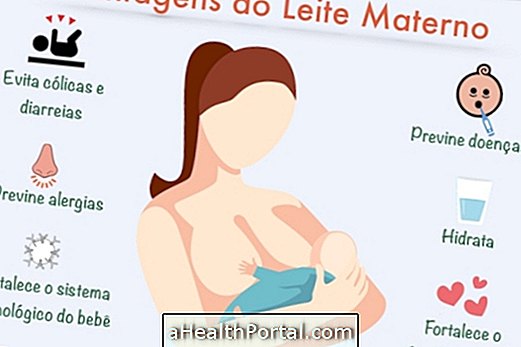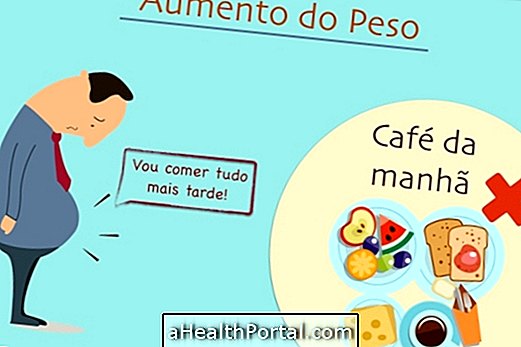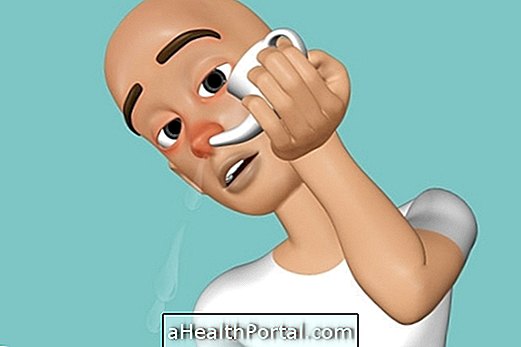The first teeth begin to fall naturally around the age of 6, in the same order as they appeared. In this way, it is common for the first teeth to fall to be the front teeth, since these are the first teeth to appear in most children.
However, each child develops in a way and so in some cases, you can lose another tooth first, without indicating any type of problem. But in any case, if there is any doubt, it is always best to consult your pediatrician or a dentist, especially if the tooth falls before age 5 or if the tooth fall is related to a fall or stroke, for example.
Here's what to do when a tooth falls or breaks due to a blow or fall.
Order of drop of milk teeth
The order of the drop of the first milk teeth can be seen in the following image:
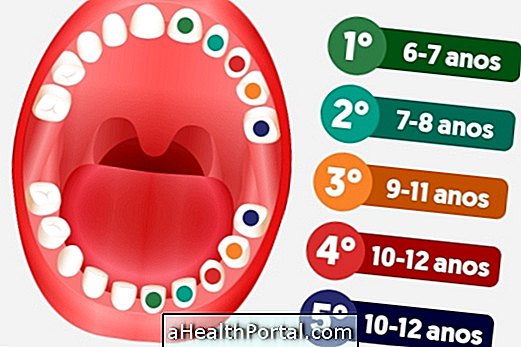
After the drop of the milk tooth the most common is that the permanent tooth is born within 3 months. However, in some children this time can be longer, and so it is important to follow up with your dentist or pediatrician. Panoramic x-ray examination may indicate if the child's dentition is within the range expected for his or her age, but the dentist should only do this before age 6 if it is extremely necessary.
Know what to do when the milk tooth falls, but the other takes time to be born.
What to do after a blow to the tooth
After a trauma to the tooth, it can break, become very malleable and fall, or else get stained or even with a small ball of pus on the gum. Depending on the situation, you should:
1. If the tooth breaks
If the tooth breaks, the small piece of the tooth can be stored in a glass with water, saline or milk so the dentist can see if it is possible to restore the tooth by sticking the small piece of broken or composite resin, improving the appearance of the child's smile.
However, if the tooth breaks only at the tip, it is usually not necessary to perform any more specific treatment and applying fluoride may suffice. However, when the tooth breaks through the middle or when almost nothing is left of the tooth, the dentist may choose to restore or remove the tooth through a minor surgery, especially if the root of the tooth is affected.
2. If the tooth becomes soft
After a blow directly into the mouth, the tooth may become malleable and the gingiva may become red, swollen or with pus, which may indicate that the root has been affected and may even become infected. In these cases, you should go to the dentist, as it may be necessary to remove the tooth through dental surgery.
3. If the tooth becomes crooked
If the tooth becomes crooked, out of its normal position, the child should be taken to the dentist so that he can assess why the earlier the tooth returns to its normal position, maires are likely to be fully recovered.
The dentist may put a containment thread in order for the tooth to recover, but if the tooth does hurt and if there is some mobility, there is a possibility of fracture, and the tooth must be removed.
4. If the tooth enters the gingiva
If after the trauma the tooth re-enters the gingiva it is necessary to go to the dentist immediately because it may be necessary to have an x-ray to assess whether the bone, root of the tooth or even the germ of the permanent tooth have been affected. The dentist may remove the tooth or wait for it to return to its normal position alone, depending on the amount of tooth that has entered the gum.

5. If the tooth falls
If the tooth decays early, an x-ray may be needed to see if the permanent tooth germ is in the gum, indicating that the tooth will be born soon. Usually no specific treatment is required and just wait for permanent tooth growth. But if the definitive tooth takes too long to be born, see what to do in: when the milk tooth falls and no other is born.
If the dentist finds it necessary, he can suture the place by giving 1 or 2 points to facilitate the recovery of the gingiva and in case of dropping the milk tooth after a trauma one should not place an implant because it can impair the development of the permanent tooth. The implant would only be an option if the child does not have a permanent tooth.
6. If the tooth becomes dark
If the tooth changes color and becomes darker than the others, this may indicate that the pulp has been affected and a color change that manifests itself days or weeks after the trauma to the tooth may indicate that the tooth root has died and that it is necessary make your withdrawal through surgery.
Sometimes a dental trauma needs to be evaluated soon after its occurrence after 3 months and even after 6 months and once a year so the dentist can personally assess whether the permanent tooth is being born and is healthy or needs some treatment.
Warning signs to return to the dentist
The main warning sign to return to the dentist is toothache, so if parents notice that the child complains of pain when the permanent tooth is being born, it is important to make an appointment. You should also go back to the dentist if the region is swollen, too red or with pus.



